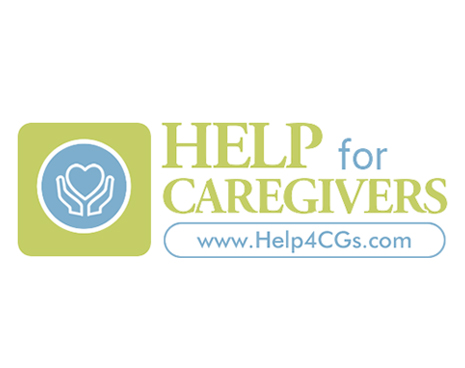Help for Caregivers: To Be Their Best and Give Their Best
By Lindsay Andrews
 The COVID-19 pandemic has changed the workplace in many ways and required employers to re-think traditionally held workplace definitions while incorporating new ones. “Hybrid” is certainly a term that’s been widely introduced into the workplace vernacular. More and more companies are familiarizing themselves with the term “remote” work as they’ve begun to embrace – either by preference or necessity – the idea that their employees can produce their work from home.
The COVID-19 pandemic has changed the workplace in many ways and required employers to re-think traditionally held workplace definitions while incorporating new ones. “Hybrid” is certainly a term that’s been widely introduced into the workplace vernacular. More and more companies are familiarizing themselves with the term “remote” work as they’ve begun to embrace – either by preference or necessity – the idea that their employees can produce their work from home.
Indeed, the need to care for ailing family members due to COVID – or the simple fact that they have school-aged or younger children to watch over during this pandemic – has given rise to many employers reshaping the ways they support their workers. And through these challenges there have arisen new opportunities to view their employees through a caregiving lens, appreciating that they have commitments and passions outside of the work environment.
For her part, Jane Hamilton has worked to enhance the well-being of caregivers for the better part of four decades. Having been a nurse for 40 years and a family caregiver for 20 with a self-described passion for protecting peoples’ mental health, she finds professional joy in “helping people find a way to take care of themselves so they can cope with the challenges and stresses of their lives.” Jane started out helping her fellow nurses find access to mental health and self-care services, then expanded her focus to include family caregivers, founding Partners on the Path in 2008. In beta-testing with a Philadelphia-region healthcare system, her caregiver support model was shown to promote employee well-being and productivity. Since then, Partners on the Path has collaborated with several organizations to offer online resources for family caregivers, most recently launching Help for Caregivers, an online platform that provides answers to caregivers’ questions and solutions to their problems.
With Help for Caregivers, employers can provide a curated, annotated listing of resources that their caregiving employees can trust – from facts on providing and managing care, to online training programs and how-to videos. This platform has truly taken the “guesswork” out of research so that caregivers who are already overwhelmed with the daily stresses of life and work need not worry about researching the proper care for their loved ones on their own. “For example, we’ve gone through the complex Medicare website and linked caregivers to the specific page where they find providers who offer the particular type of help they need. The site offers hundreds of links to condition-specific and caregiver-focused organizations that give guidance on providing or managing care,” Jane says. Importantly, this easy-to-navigate caregiver directory also lists free helplines that allow caregivers to talk to someone themselves, helping them practice self-care in the process.
How can employers best support their workers’ mental health in the post-pandemic workplace? Jane suggests reevaluating their definition of the term “caregiver,” as it has shifted in the COVID era. She cites a Harvard Business School study that expanded the definition of caregiver to encompass all employees who have “care responsibilities” – meaning that it would apply to parents. Automatically, the vast majority of individuals in the workplace who qualified as caregivers soared to 73 percent of the workforce – and Jane believes that in today’s environment, where working from home, COVID-related illness and school closures are a continued reality, that expanded definition should continue to apply; and employers should prioritize the mental health of their caregiving workers as they go forward.
Having well-adjusted, mentally healthy and happy employees doesn’t just benefit employees. Jane says it also benefits the employer in a number of ways. She cites a 2020 Guardian Benefits study which found that supporting caregiving employees encourages trust, loyalty and employee growth. Among caregivers, 74 percent of those surveyed were found to be more satisfied with their job and reported that they preferred to stay with their employer long-term. “There are many ways employers can approach supporting their caregivers in the workplace,” Jane says. “We all want to be recognized and supported when we’re facing challenges; and the more support and genuine care we get when we’re going through those tough times, the more loyal we’ll feel to those who are there to help us through it.” Studies show that failing to offer caregiver support and resources is costly to employers. A Cost Calculator on the Help for Caregivers website breaks down how much caregiving employees cost a business – both in productivity and health care costs – as many companies don’t realize that annually, they’re losing an estimated $7,470 per caregiver.
As employers move forward in the post-pandemic workplace, Jane and her Help for Caregivers online tools continue to provide solid, resilience-building resources to as many caregivers as possible. “Caregivers don’t ‘self-identify’ – when we’re caregivers we view it as a responsibility and tend to diminish or deny that we have that role; we don’t recognize how it drains our attention and energy,” Jane says. That’s why it’s more critical than ever that we serve these populations, ensuring that employers arm them with education and information to bolster their self-awareness and mental health. With COVID having taken its toll on millions of Americans and amplified worries, fears, anxiety and social isolation, the role of mental health professionals promoting employee well-being cannot be overstated. It’s imperative for caregiver advocates like Jane to succeed in their ongoing efforts to get employees on track to a balanced lifestyle. Their valuable resources and compassion can help guide us through these challenging times and help us realize we’re not alone.
Lindsay Andrews is director of member communications with the Pennsylvania Chamber.

Four Ways to Support Caregivers in the Workplace,
Tips from Jane Meier Hamilton, MSN, RN
1. Learn about caregiving in your organization. Gather information about how your employees view caregiving. Add caregiver-related questions to employee surveys. Use this information to develop a plan. There is no one approach to caregiver support that works for all organizations. When designing your approach, focus on caregivers across the life-span; not just on childcare or eldercare. For more:
– Ideas on structuring questionnaires
– Suggestions for gathering information
Harvard Business Review: “Supporting Employee Caregivers Starts with Better Data”
2. Cultivate a “caregiver-friendly” culture.
Corporate acceptance of work-life issues promotes employee acceptance of them. Managers and supervisors are the gatekeepers. It’s important for leaders to make it OK to be a caregiver and to use available benefits or dependent care policies.
Create an environment in which employees feel comfortable enough to let others know they’re caregivers. It’s a fact they often hide because they worry that they’ll be seen as less committed to work. Openly discuss caregiving. Be aware that your words and tone can stifle sharing OR encourage openness and support. Show respect for the challenges of providing childcare, eldercare and everything in between. For more:
– A guide from the UK, where the term “carer” is used to describe caregivers:
– Caregiving guide from the U.S. specific to small businesses
3. Offer benefits that meet the needs of caregiving employees.
There is no “one size fits all” solution. Care benefits must meet the needs of both employees and the business. Identifying the right type of care benefits may take a bit of effort but offering the benefits employees really want will yield satisfaction, productivity and retention.
Flexibility is highly valued by caregiving employees. Telecommuting, flextime, FMLA leave, paid or unpaid time off, time-off banks among co-workers…whatever form it takes is often a priority for caregivers. Promote the flexible arrangements that your organization already offers. For more: https://www.familiesandwork.org/research/employer-employee-guides-and-toolkits-when-work-works
Providing easy access to caregiving advice, hands-on help and answers to caregiving questions are also valued. A directory of reliable caregiver resources helps with the search for information. For example:
Caregiver-Specific Websites
– Caregiver Action Network: https://caregiveraction.org/
– Easter Seals: http://www.easterseals.com/explore-resources/for-caregivers/
– Family Caregiver Alliance: https://www.caregiver.org/
Community Agencies
Provide contact information for supportive agencies in your community. Local providers include:
– Meals on Wheels: food
– Lyft and Uber: transportation
– Local Area Agency on Aging: adult day care
Organization-based Resources
Promote existing programs and benefits offered by your organization. Re-package them as important benefits for caregivers. Examples include:
– Employee assistance and wellness program offerings
– Policies on taking leave, personal and vacation time
– Offering the Help4Caregivers Program: https://www.help4cgs.com/ customized web portal that provides a vetted array of resources for caregivers and supervisors.
4. Learn about what other employers have done and what caregiving experts recommend.
– AARP and Public Private Strategies’ Small Business Caregiving Guide https://www.smallbusinesscaregivingguide.org/
– SHRM’s article: “Employers Benefit by Providing Elder Care Support” https://www.shrm.org/resourcesandtools/hr-topics/benefits/pages/employers-benefit-by-providing-elder-care-support.aspx
– SHRM’s article, “Supporting Employees with Caregiving Responsibilities” https://www.shrm.org/hr-today/news/hr-magazine/spring2022/pages/supporting-employees-with-caregiving-responsibilities.aspx